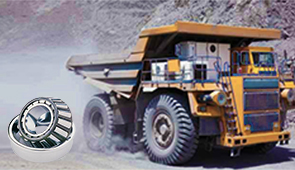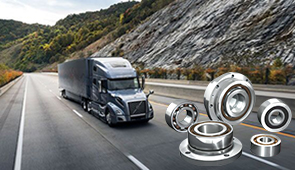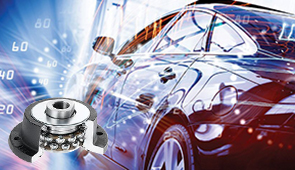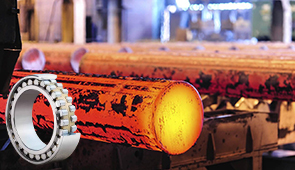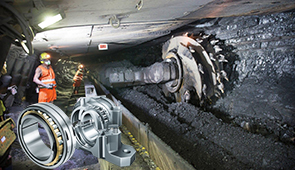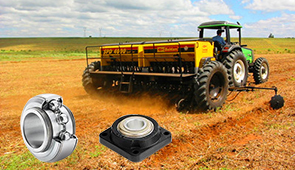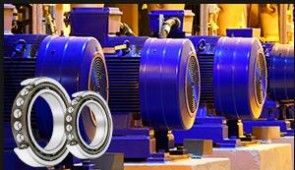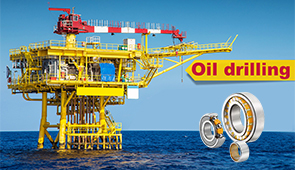Needle Bearings vs Ball Bearings: Which Type of Bearing Offers Advantages for Your Application?
Bearings are a critical component in countless mechanical systems, facilitating the smooth and efficient transfer of loads while minimizing friction between moving parts. Among the many types of bearings available, needle bearings and ball bearings are two commonly utilized options, each offering distinct characteristics suited to specific applications. Choosing the right bearing type is pivotal for optimizing performance, durability, and cost-effectiveness in your machinery or equipment. This article provides a comparative analysis of needle bearings and ball bearings, outlining their design, functionality, advantages, and applications to help you determine the optimal solution for your engineering needs.
What are the advantages and disadvantages of needle bearings vs ball bearings?
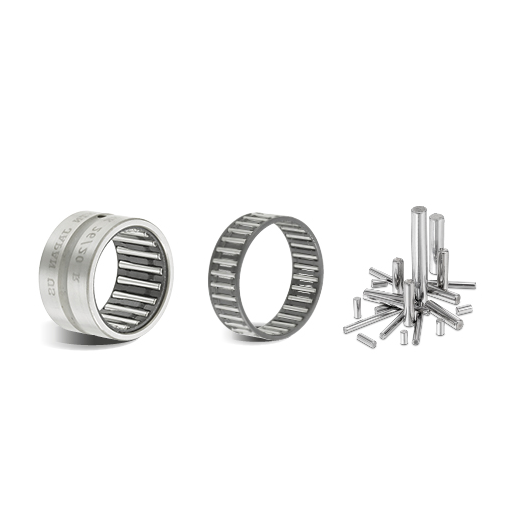
What are the benefits of using needle bearings?
Needle bearings have specific benefits that are particularly useful for particular applications, especially where saving space and handling high loads is of utmost importance. Some specific advantages are listed below:
- Compact Design: Compared to other systems, needle bearings possess a higher cross-sectional load due to slender cylindrical rollers. They are an excellent choice for applications where limited radial space is available.
- High Load-Carrying Capacity: Due to the increased area of contact between the roller and the raceway, needle bearings are able to endure significant radial loads, making them efficient in force distribution.
- Reduced Weight: Compared to other bearing types, needle bearings are relatively lightweight, which is beneficial for sensitive machinery in aerospace and automotive applications.
- Minimal Friction and Heat Generation: The rolling of the needle bearing itself generates little friction, meaning that excessive heat does not build up, improving energy efficiency and operational life.
- Versatility: Needle bearings can come in a variety of designs, giving options for configuration depending on load and speed requirements.
These technical requirements justify their use in gearboxes, transmissions, pumps, and many other parts of precision engineering where compactness alongside reliability is needed.
What are the drawbacks of needle bearings?
In addition to the advantages presented by needle bearings, there are negative aspects. Firstly, radial internal clearance, if too loose, can cause problems with load-carrying capacity if heavy radial or axial loads are present. Secondly, their degree of precision forces operators to achieve proper alignment; otherwise, even slight amounts of misalignment can lead to uneven wear, which decreases bearing life. Thirdly, these bearings frequently need quality lubrication to lessen friction and wear, which causes greater maintenance needs. Lastly, impact or shock loads are more difficult to manage with needle bearings because their rolling elements are smaller than other types of bearings, like spherical roller bearings.
- Radial Load Capacity: Significantly less capacity when juxtaposed with other types of heavy-duty bearings.
- Alignment Tolerance: Should be fitted accurately to achieve efficiency as well as avoid damage through premature failure.
- Lubrication Requirements: Must use high-grade oil or grease to achieve maximum usability.
- Shock Load Resistance: Limited ability to withstand impact forces caused during operations due to the small contact area of rolling parts.
These factors highlight the importance of considering the application context when determining the use of needle bearings in some engineering purposes.
How do needle bearings and ball bearings handle different types of loads?
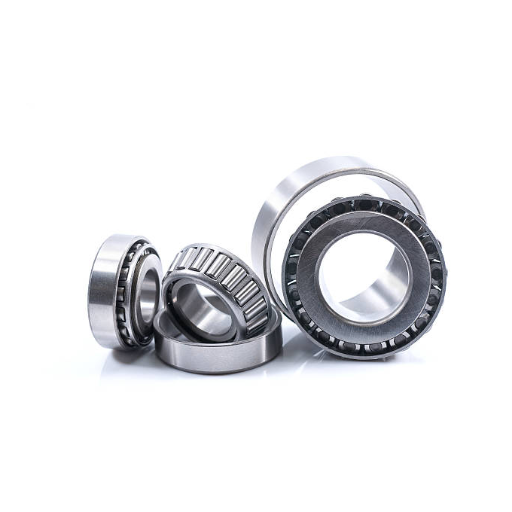
How do needle bearings and ball bearings perform under axial loads?
Due to the structural differences in these bearings, a needle bearing gets the task done while a ball bearing works in more versatile options. Each have their own peculiar functions under axial loads.
- Needle Bearings: These are specific ball bearings made for radial loads and do not perform very well on axial loads. When an axial load is applied, it may create undue additional stress because of the small contact surface which causes a faster pace of wear and leads to a decrease in lifespan. Specific axial load capacities depend on the bearing model and lubrication but generally specific measures compared to ball bearing are miniscule.
- Ball Bearings: These ball-type needle bearings are much wider in scope as they manage both radial and axial loads efficiently. They deal with the axial load by evenly spreading them across the points of contact between the rolling parts, more so suited for dual load situations. Values for axial load capacity can depend markedly on the kind. For example, angular contact ball bearings are made to fulfill higher axial load applications. To demonstrate, single-row angular contact ball bearings typically take axial loads equal to 40-80% of the radial load.
Choosing between needle bearings and ball bearings for axial load applications must be based on the specific engineering requirements, including load magnitude, direction, operating conditions, and expected durability.
Which bearing is more suitable for combined radial and axial loads?
For the combination of radial and axial loads, I would suggest an angular contact ball bearing as the most reasonable choice. This type of bearing can support both load types simultaneously because of its particular internal geometry.
- Contact angle: Usually from 15° to 40°, which is high enough to support substantial axial loads relative to radial loads.
- Load capacity: The axial forces that can be sustained are dependent on the design of the bearing, ranging from 40-80% of the radial force.
- Durability: They are made using high-strength materials, which make it possible to operate under combined loads.
To achieve even greater load-carrying-capacity, double-row angular contact and tapered roller bearers could be used because of their increased rigidity and strength. Combined load performance of the bearings can be maximized with proper alignment and preload.
In which applications are needle bearings preferred over ball bearings?
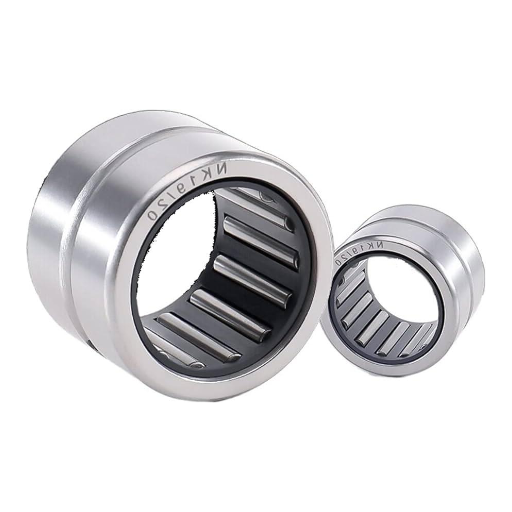
What automotive applications commonly use needle bearings?
Needle bearings have become popular with automobile industries that require high load-carrying capabilities in compact areas. It is mainly due to its design, which can manage significant radial loads while having a low profile. Common automotive applications include:
- Transmission systems: In both automatic and manual transmissions, needle bearings are implemented on shafts, gears, and planetary gear sets. These areas are known for having high radial loads and minimal space.
- Engine components: Rocker arms, camshafts, and connecting rods are prone to dynamic heavy loads and thus require considerable smooth mobility, which is often accomplished via needle bearings.
- Drivetrain systems: Needle bearings are implemented in universal joints and constant velocity (CV) joints. These locations need the bearing’s capabilities of smooth torque transmission under angular misalignment.
Most automobile applications incorporate the compact and low-rotational-friction features of needle bearings. Efficient and serviceable performance can be achieved with proper lubrication and fitment.
When are needle bearings ideal for industrial machinery?
Needle bearings are best suited for industrial machines where space is limited, the load is heavy, and frictional motion is low. Because needle bearings can endure great radial loads with minimal column space, they are critical components of gearboxes, pumps, and conveyor systems. Moreover, they are beneficial in areas where circulation movements or significant dynamic forces exist and larger bearing sizes are not feasible.
- Radial Load Capacity: Capable of bearing high radial loads because the elongated rollers properly redistribute the required load over the contact area.
- Compact Dimensions: Vertical and horizontal height restrictions due to small cross-sectional area manageable without diminishing load performance.
- Low Rotational Friction: Helpful for energy loss reduction during rotation, which is an advantage for applications that require fast speed.
- Durability: Under correct lubrication, needle bearings can be resistant to operational stresses and wear in harsh environments.
- Operating Temperature Range: Depending on the material as well as the lubricant used, frequently designed to operate at higher temperatures with difficulty.
With the optimization of these factors, needle bearings guarantee dependable and effective operation in many industrial applications.
How do needle bearings and ball bearings compare in terms of speed and friction?
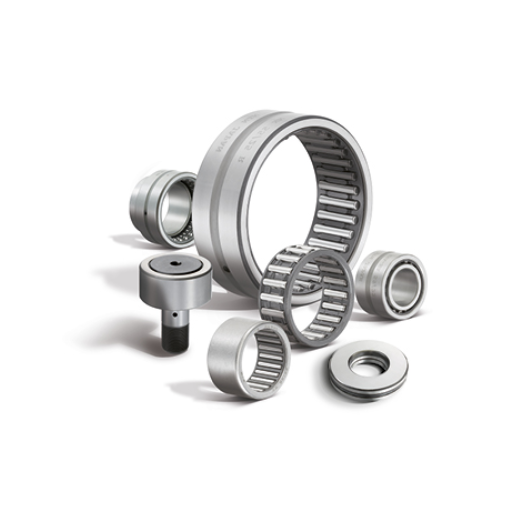
Which bearing type offers lower friction at high speeds?
Needle bearings generate higher friction than ball bearings, primarily due to the rolling element to raceway contact surface area and its shape (point for ball bearings versus line for needle bearings). The latter offers a larger contact surface, which increases friction.
- Contact Area: Ball bearings interface through point contact, while needle bearings use line contact.
- Friction Coefficient: Point contact results in ball bearings having lower contact and rolling resistance.
- Max rotational speed: Ball bearings are designed for high-speed applications because they generate less heat energy.
- Load capacity: Needle bearing perform well in radial load, but generate more friction due to larger contact area.
Therefore, ball bearings offer a better alternative for lower friction and higher speed performance.
How do needle bearings and ball bearings affect motor performance?
Motor effectiveness is influenced by the selection of either needle bearings or ball bearings, considering both types have advantages and disadvantages:
- Friction and Efficiency: With a point of contact design, ball bearings have a low friction coefficient and consequently, energy loss to friction is minimal resulting in improved efficiency in motors as well. In contrast, needle bearings with line contact tend to exhibit higher friction which may decrease efficiency.
- Speed Capability: Ball bearings can allow motors to operate at high speeds without overheating; thus, they are ideal components for high-speed machinery. Needle bearings do not perform well at high rotational speeds because the added friction results in too much heat.
- Load Handling: For high radial loads, needle bearings are the most suitable type due to their extended contact area. Ball bearings have the ability to manage radial and axial loads but at moderate levels, and tend to favor speed over heavy-load performance.
- Durability and Wear: Needle bearings provide increased durability and resistance to wear due to their larger contact area while under heavy radial loading which makes them ideal in situations which require extreme durability. On the other hand, balls bearings tend to experience alot of wear due to heavy load and high speed, especially when sustained over time.
These distinctions demonstrate the need to choose the correct bearing type according to the motor’s functional needs, taking into account variables such as speed, load, and efficiency.
What are the lubrication requirements for needle bearings vs ball bearings?
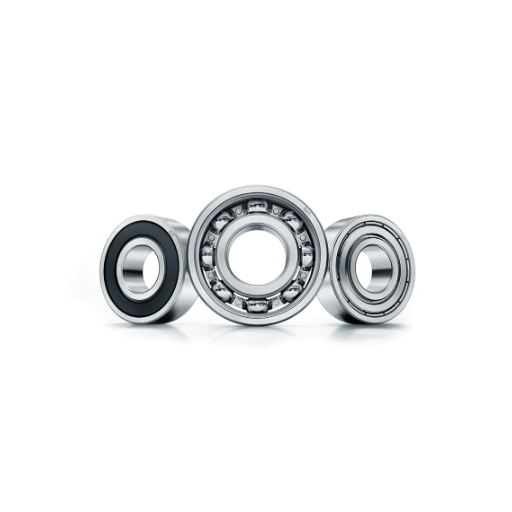
How does lubrication impact the performance of needle bearings?
The efficiency and life span of needle bearings greatly depend on proper lubrication and its application. Applying just the right amount of lubricant helps reduce the friction that exists between the needle rollers and the raceway, thereby reducing wear and avoiding surface damage. Too little lubrication increases contact pressure common with needle bearings, causing excessive heat and material fatigue as well as failure. It is imperative to choose the correct type and viscosity for needle bearings lubricants, either oil or grease, depending on the operating conditions:
- Operating Temperature: For applications involving heightened temperatures, high or synthetic lubricants have to be used to maintain film strength without breakdown.
- Rotational Speed: Lower viscosity lubricants have to be used for high speeds to reduce frictional resistance and the generated heat.
- Load Conditions: Radial loads trump most other loads and thus lubricants with extreme pressure (EP) additives have to be used for greater load-destroying capacity and surface protection.
With proper lubrication practices, the performance and operational life of needle bearings can be greatly improved, even when different operating conditions are placed.
What are the lubrication needs for ball bearings?
For ball bearings to operate seamlessly, lubrication is essential as it minimizes friction and prolongs service life. Based on the technical data at hand, below are the primary factors to consider in the selection and application of ball bearing lubricants:
- Operating Temperature: Lubricants need to provide stability over the known range of temperatures in which the application operates. At elevated temperatures, synthetic oil or high-temperature grease is recommended to guard against oxidation and breakdown of viscosity.
- Rotational Speed: Low viscosity lubricants are preferred for high-speed applications since they have the greatest potential to reduce drag and heat, thereby allowing the system to work without struggle.
- Load Type and Magnitude: Extreme Pressure (EP) containing lubricants are needed to protect surfaces from fatigue and severe wear in applications with high radial or axial loads and stress.
- Contaminant Protection: Grease provides better protection against contamination because of its ability to seal, thus, it is preferred. Oil can be used in systems with good seals or in continuous circulation systems.
Improved lubrication practices, in addition to boosting efficiency, also mitigate risks tied to overheating, material fatigue, contamination, and unexpected failures.
Frequently Asked Questions (FAQs)
Q: What are the main differences between needle bearings and ball bearings?
A: The main differences lie in their shape and contact area. Needle roller bearings use cylindrical rollers that are long and thin, while ball bearings use spherical balls. Needle bearings have a larger surface area in contact with the races, which allows them to handle heavier loads in a smaller space. Ball bearings, especially deep groove ball bearings, are more versatile and can handle both radial and thrust loads.
Q: What advantages do needle bearings offer compared to other types of bearings?
A: Needle bearings offer several advantages compared to other types of bearings. They have a higher load capacity in a smaller space due to their larger contact area. Needle bearings are designed to handle heavy radial loads and can operate at high speeds. They also have a lower coefficient of friction, which helps reduce heat generation and improve efficiency in certain applications.
Q: In which applications are ball bearings widely used?
A: Ball bearings are widely used in various applications due to their versatility. They are commonly found in automotive components, electric motors, household appliances, industrial machinery, and aerospace equipment. Radial ball bearings and deep groove ball bearings are particularly popular for their ability to handle both radial and thrust loads, making them suitable for a wide range of applications where moderate loads and high speeds are present.
Q: How do needle bearings and ball bearings differ in terms of load capacity?
A: Needle bearings generally have a higher radial load capacity compared to ball bearings of similar size. This is due to the larger surface area in contact between the needle rollers and the inner and outer races. Ball bearings, while capable of handling both radial and thrust loads, typically have a lower load capacity in purely radial applications. However, ball bearings are more versatile and can handle combined loads better than needle bearings.
Q: How do I lubricate needle bearings and ball bearings?
A: Both needle bearings and ball bearings require proper lubrication to reduce friction and prevent wear. For needle bearings, a thin film of oil or grease is typically applied to the rollers and races. Ball bearings are often pre-lubricated with grease but may require periodic re-lubrication depending on the application. It’s important to use the appropriate lubricant type and quantity as specified by the bearing manufacturer to ensure optimal performance and longevity.
Q: What are the speed limitations of needle bearings compared to ball bearings?
A: Generally, ball bearings can operate at higher speeds than needle bearings. This is because the rolling elements in ball bearings have less contact area with the races, resulting in lower friction and heat generation at high speeds. Needle bearings, while capable of high-speed operation, may have limitations in extremely high-speed applications due to their larger contact area. However, the specific speed capabilities depend on the bearing design, size, and application requirements.
Q: How do needle bearings and ball bearings compare in terms of cost and maintenance?
A: Ball bearings are typically less expensive and require less maintenance compared to needle bearings. This is partly due to their simpler design and wider availability. Needle bearings, while potentially more expensive, offer advantages in specific applications that may justify the higher cost. Both types of bearings are designed to handle long service lives when properly installed, lubricated, and maintained according to manufacturer specifications.
UCTH213-40J-300 with Setscrew(inch)
CNSORDERNO: Normal-duty(2)
TOGN: UCTH213-40J-300
SDI: B-R1/8
SD: 2 1/2
UCTH212-39J-300 with Setscrew(inch)
CNSORDERNO: Normal-duty(2)
TOGN: UCTH212-39J-300
SDI: B-R1/8
SD: 2 7/16
UCTH212-38J-300 with Setscrew(inch)
CNSORDERNO: Normal-duty(2)
TOGN: UCTH212-38J-300
SDI: B-R1/8
SD: 2 3/8
UCTH212-36J-300 with Setscrew(inch)
CNSORDERNO: Normal-duty(2)
TOGN: UCTH212-36J-300
SDI: B-R1/8
SD: 2 1/4
UCTH211-35J-300 with Setscrew(inch)
CNSORDERNO: Normal-duty(2)
TOGN: UCTH211-35J-300
SDI: B-R1/8
SD: 2 3/16
UCTH211-34J-300 with Setscrew(inch)
CNSORDERNO: Normal-duty(2)
TOGN: UCTH211-34J-300
SDI: B-R1/8
SD: 2 1/8









